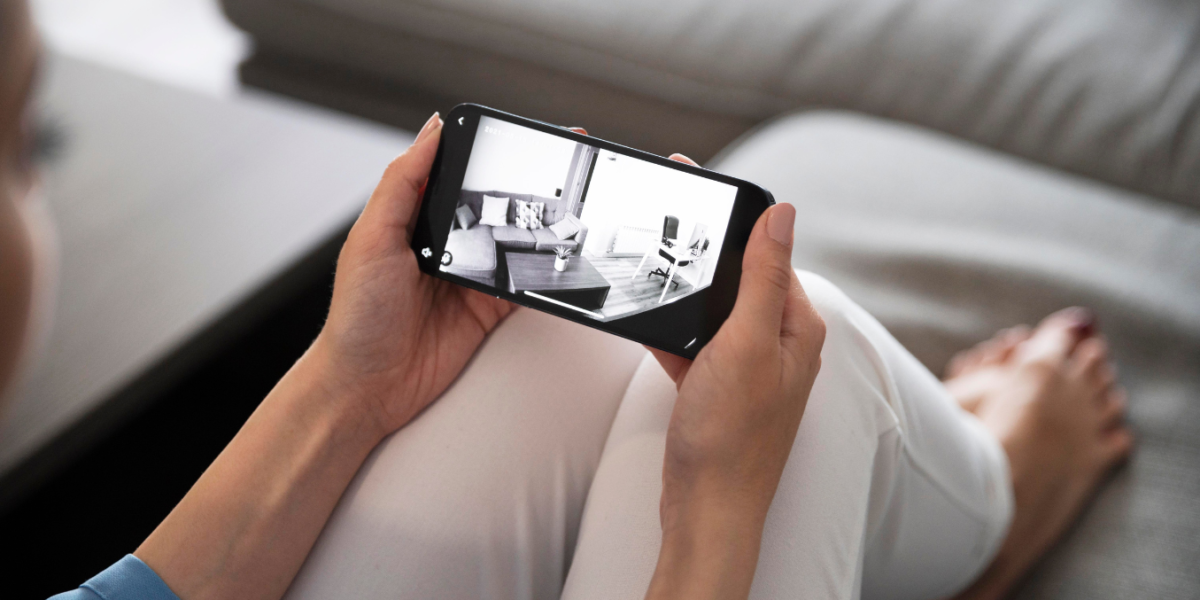Every homeowner wants to ensure the safety and security of their family, property, and assets. With the increasing frequency of property crimes such as theft, burglary, and vandalism, you have a reliable home security system that includes 24/7 video surveillance has become a necessity rather than a luxury. In this blog, we’ll discuss the benefits of 24/7 security surveillance, the different types of security surveillance systems available for homeowners, how to install and maintain them, their cost, and the privacy and legal considerations you should be aware of.
Objective Of A Home Security System
The main objective of having a home security system is to safeguard your home and ensure your family’s safety. Although one of the most apparent threats is theft, a home security system can also identify other hazards like smoke, fire, carbon monoxide poisoning, and water damage. Whether you self-monitor or pay for professional monitoring, you can receive alerts if there is a danger in your home, regardless of location. Even if you are not home, a security system with professional monitoring will promptly notify emergency personnel if a flood or smoke sensor is activated. Notably, there is an additional expense for professional monitoring of the water and smoke sensors. To use this service, you must buy the security company’s equipment; it is not a part of the regular package.
The Benefits Of 24/7 Security Surveillance
Deters Criminal Activity
The presence of security cameras around your home can discourage burglars and other criminals from targeting your property. Culprits are more likely to avoid homes with visible security measures, which can make your home less of a target for criminal activity.
Provides Evidence
Security cameras can provide valuable evidence to help law enforcement identify and catch the perpetrator if a crime occurs. The footage from security cameras can be used to build a case against the criminal, potentially leading to their arrest and conviction.
Monitors Activity
Security cameras can provide real-time monitoring of your property, allowing you to monitor who is coming and going. For example, you can use the cameras to see when your children arrive home from school or when a delivery arrives.
Alerts For Emergencies
Many modern security systems include fire or carbon monoxide detection warnings. These systems can notify emergency services when necessary, which can help to prevent severe damage or harm.
Lowers Home Insurance Costs
Having a security system installed can reduce your home insurance costs, as many insurers offer discounts for homeowners with these systems. The savings from insurance discounts can offset the initial cost of installing a security system.
Increases Property Value
A home security system can add value to your property, making it a more attractive option for potential buyers. Prospective buyers may be more likely to choose a home with an installed security system that offers protection.
It Provides Peace Of Mind
When you are away from home, it gives you peace of mind that your home and loved ones are safe and can be monitored. You can relax knowing your home and loved ones are safe and secure.
The Different Types Of Security Surveillance Systems
Different types of security surveillance systems are available for homeowners, including wired and wireless CCTV cameras, motion sensors, and alarms. Wired systems are typically more reliable and offer better image quality but can be more expensive to install. Wireless systems are more flexible and easier to install but may have connectivity issues or lower image quality. You should choose a system that meets your specific needs and budget. For example, suppose you have a large property or multiple entry and exit points. In that case, you may need a system with multiple cameras and motion sensors.
How To Install And Maintain A Security Surveillance System
Installing a security surveillance system in your home may seem forbidding, but it can be done with a few simple steps. First, you must choose the right camera location, covering all entry and exit points and high-risk areas such as garages, basements, and backyards. Then, you need to wire and configure the cameras and software and test the system to ensure it works correctly. To maintain the system, you should clean the cameras regularly, update the firmware and software, and check the connectivity and storage capacity. You can hire a professional security system provider like ADT- authorized dealers to help install and maintain the system.
Privacy And Legal Considerations
While security surveillance can enhance your home’s safety and security, it can also raise privacy and legal concerns, such as data protection, consent, and compliance with local laws and regulations. To respect privacy and ethical considerations, you should inform your family members and visitors about the cameras, avoid recording private areas such as bedrooms and bathrooms, and ensure the system complies with local regulations. You should also know the security system provider’s data storage and retention policies and ensure they protect your data from unofficial access or misuse.
Conclusion
A reliable home security system with 24/7 video surveillance is essential for homeowners who want to protect their property and loved ones from threats. With the increasing availability and affordability of security surveillance systems, installing and maintaining a system that meets your specific needs and budget is easier. If you’re interested in installing a security surveillance system, research and speak with a professional security system provider to get the best solution for your needs. You can ensure the safety and security of your home by understanding the advantages of 24/7 security surveillance, the various types of plans available, and the privacy and legal considerations involved.




